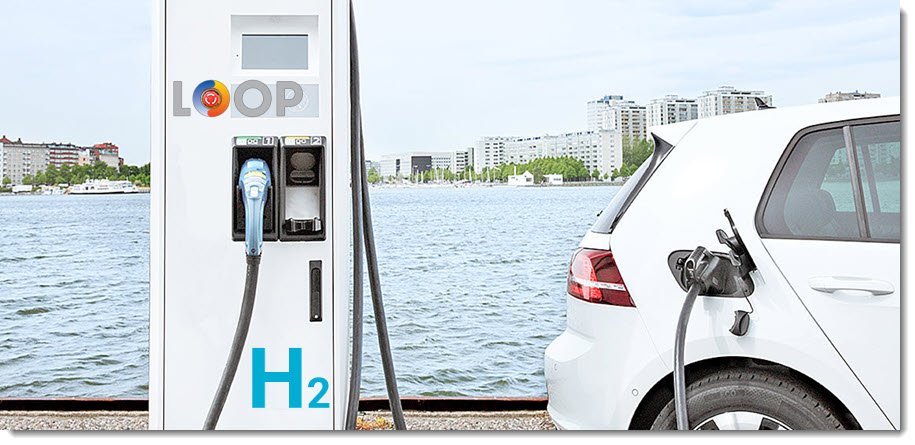Platinum Group Metals–How are These Critical Minerals Being Used Today & How Will They be Used in the Future?
PGMs role in the future of the Hydrogen Economy as demand overtakes supply.
Platinum Group Metals (PGMs) are essential and precious metals that include Platinum, Palladium, Rhodium, Iridium, Osmium, and ruthenium.
According to the USGS, the 50 mineral commodities crucial to the U.S economy and national security include platinum group metals.
These critical metals are known for their purity, high melting points, and exceptional catalytic properties. They are highly resistant to corrosion and their unique chemical and physical properties make PGMs excellent raw materials, catalysts, and ingredients for manufacturing processes. PGMs play a critical role in the fight against climate change and green energy. South Africa and Russia currently control the majority of the global PGMs supply.
PRESENT
Today, PGMs demand is driven mainly by the automotive industry. Platinum and Palladium are the critical drivers in auto catalysts, but all of the PGM metals are relevant components for catalytic converters in internal combustion engine systems.
The image below breaks down the demand for Platinum in 2022.
Global Platinum Demand – Source: statista.com
The following chart breaks down the use for each critical metal.
Source: Energy.gov
Using platinum group metals as auto catalysts prevents harmful emissions from a vehicle’s internal combustion engine from polluting the air.
FUTURE
As global leaders move towards a world of clean energy, platinum group metals increasingly play a critical role in that movement.
PGMs are crucial to Hydrogen clean energy. The Biden Administration’s DOE has just launched a massive bipartisan infrastructure law funding $8 billion for hydrogen hubs across the U.S.
While the Global Hydrogen Economy is still in its infancy, demand for PGMs is rising, and supply remains uncertain with strained geopolitical relations in Russia (The largest producer of Palladium) and supply constraints in South Africa due to labor shortages and mine shutdowns.
Projections indicate a compound annual growth rate of some 95.4 percent between 2020 and 2030, with the global FCEV fleet reaching approximately 13 million units in 2030
As of December 2020, 31,225 passenger fuel cell electric vehicles (FCEVs) powered with hydrogen were sold worldwide. While battery EVs require a considerable amount of cobalt and lithium, FCEVs require Platinum, and hydrogen storage requires Palladium. Current FCEVs use one to two ounces of Platinum, which is far more than what is in a diesel catalytic converter. In addition to light-duty FCEV and ground transportation, fuel cells can also be used for shipping and aviation.
Source: Anglo American Platinum Results
The Biden Administration has announced that replacing fossil fuels with hydrogen is a focal point for the United States to reach 2050 net-zero GHG emissions, given hydrogen has zero carbon dioxide (CO2) emissions during application.
To meet net-zero carbon goals, hydrogen production needs to transition to green hydrogen produced by electrolysis of water and powered by renewable energy. With applications in both industrial and transportation sectors, which are the two leading CO2 emitters in the United States (29% and 36%, respectively), green hydrogen can contribute to decarbonization in several ways
Replacing grey hydrogen produced from carbon-intensive SMR process. Currently, SMR hydrogen is broadly used, incurring a large amount of CO2 emissions. Each year about 10 million tonnes of hydrogen is produced in the United States of which 95% is from SMR. About 9 million tonnes of CO2 is emitted per million tonnes of hydrogen production, accounting for about 2% of the U.S. total annual CO2 emissions. Replacing grey with green hydrogen in such applications can reduce the direct CO2 by 86 million tonnes.
For the industrial sector, green hydrogen can contribute to decarbonization by replacing carbon-intensive reducing agents (e.g., replacing coal use in steel plants) and/or replacing fossil fuels (e.g., natural gas) as energy sources to supply heat, steam, or electricity.
For the transportation sector, green hydrogen can contribute to decarbonization by powering fuel cells for electric vehicle propulsion and to power electric systems and propulsion in spacecraft and aircraft.
Summary of assumptions and questions about future PGM demand in catalyst and non-catalyst uses across sectors.
Source: EERE
In conclusion, PGMs are critical to the future of the hydrogen economy. Global supply vastly underestimates the future demand for PGMs. The geopolitical upheaval in Europe has created significant uncertainty over PGM shipments from Russia. South African supplies will fall in 2022 as plant maintenance and operational challenges pummel supply. Investor interest in PGM seems unreasonably limited despite increasingly elevated risks to supplies. Securing supply chains, funding domestic infrastructure, and investing in domestic producers are needed to move forward.





